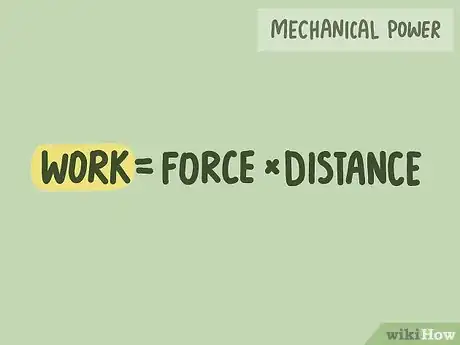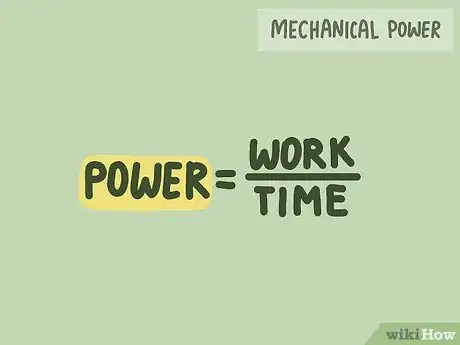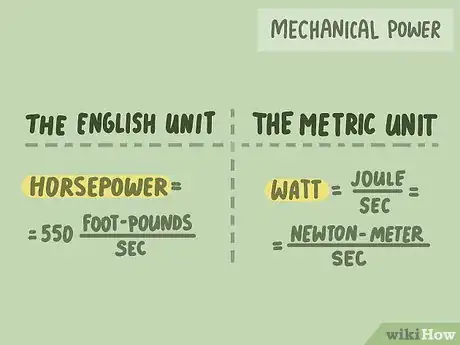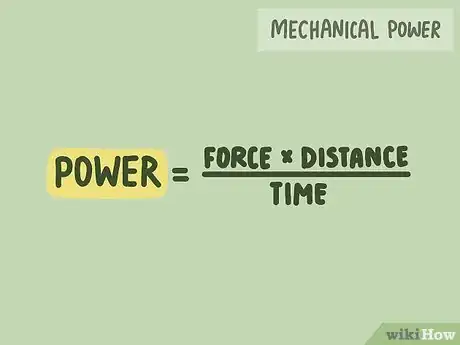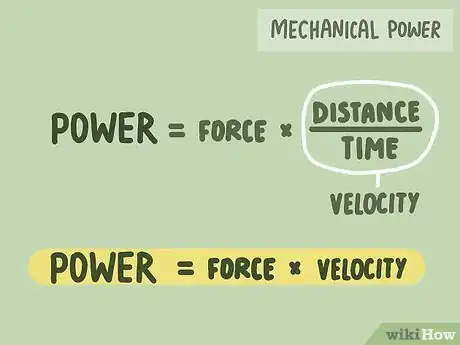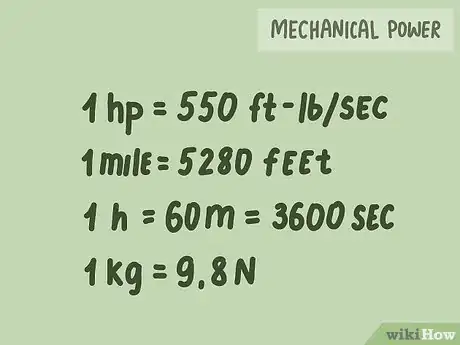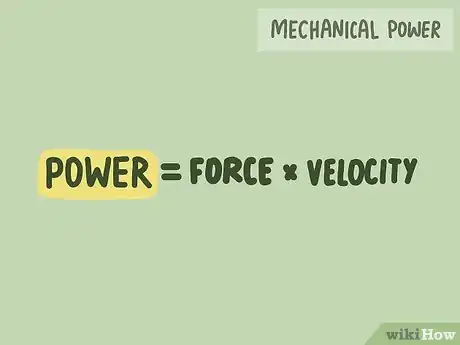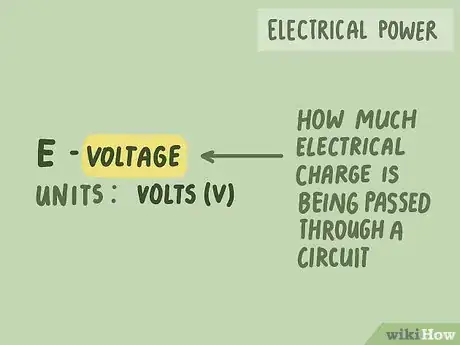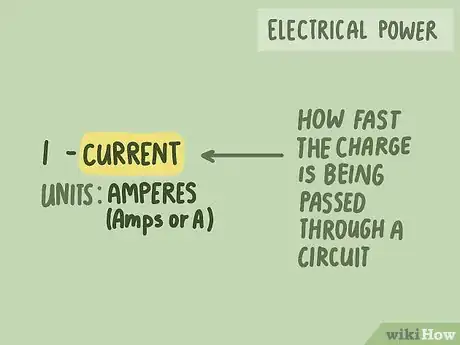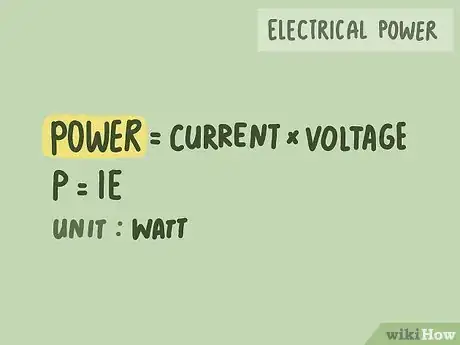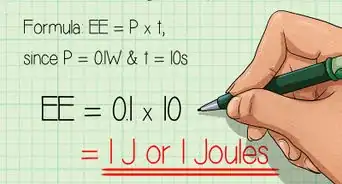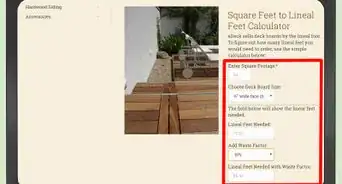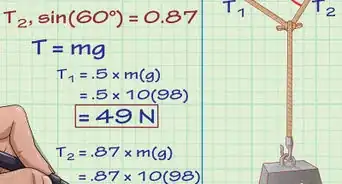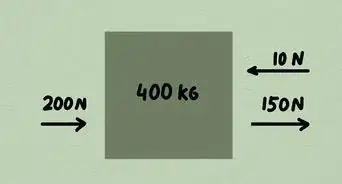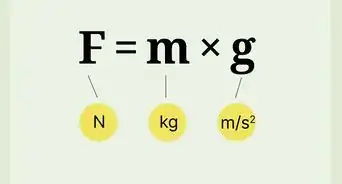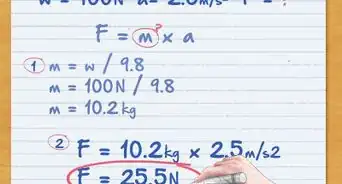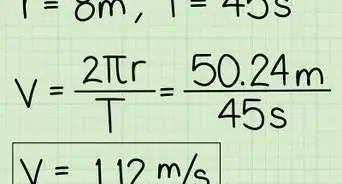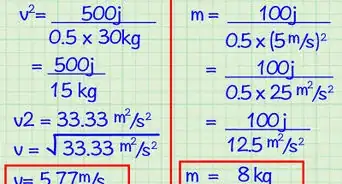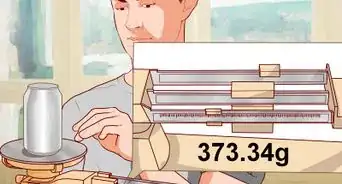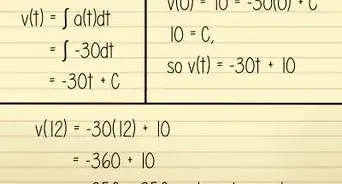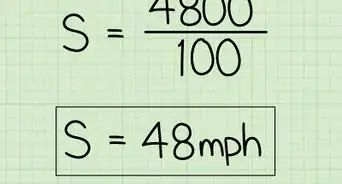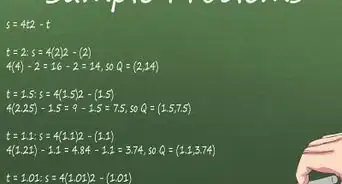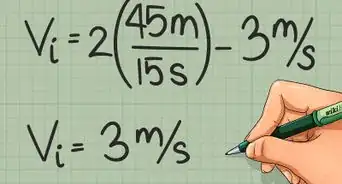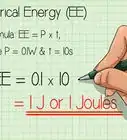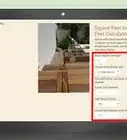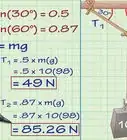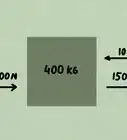This article was co-authored by Daniel Stoescu. Daniel Stoescu is a Master Electrician and the Owner and Operator of Home Tech Solutions, LLC in Hampton, Virginia. With over a decade of experience, Daniel specializes in wiring residential, commercial, and light industrial structures. The Home Tech Solutions team has over four decades of combined experience and offers comprehensive solutions for residential electrical needs.
There are 9 references cited in this article, which can be found at the bottom of the page.
This article has been viewed 356,936 times.
Power is a physical concept that has several different meanings, depending on the context and the information that is available. Power can be a measurement of how much work someone or something performs over time. In a second context, power can be calculated as a function of velocity, how quickly you get a weight to move. Finally, electrical power is the product of voltage and current. If you know the context and you know which measurements you have to start with, you can select the appropriate formula and calculate power output.
Steps
Calculating Mechanical Power as a Function of Work
-
1Calculate work. In mechanical physics, work is the amount of force needed to move something over a selected distance. The formula for work is:[1]
- To understand this concept, think about a 100 pound cement block. Moving that block 2 feet requires twice as much work as moving the same block 1 foot. This is also the same amount of work required to move a 200 pound block for a distance of 6 inches (1/2 a foot).
-
2Define mechanical power. Power is the rate at which work is performed over time. The basic formula for defining power is:[2]
- Think again about the 100 pound cement block. Moving that block 2 feet in 10 seconds requires twice as much power as moving the same block for the same distance in 20 seconds. Moving the same object faster requires more power.
Advertisement -
3Determine the units you're using for work and power. You need to determine whether you are measuring work and power in traditional English units or in metric units.
- The English unit for work is the “foot-pound.” This comes from multiplying the distance measured in feet by the force measured in pounds. The unit for power comes from dividing by time, in seconds. The power unit is the “foot-pound per second.” A more familiar term is the “horsepower,” which is defined as 550 foot-pounds per second.[3]
- The metric unit for work is a joule. A joule is equal to one Newton-meter, which is the amount of work needed to move a 1 Newton force a distance of 1 meter. When you divide work by time, you get power, measured in units of joules per second. This is also called a Watt.[4]
- The English unit for work is the “foot-pound.” This comes from multiplying the distance measured in feet by the force measured in pounds. The unit for power comes from dividing by time, in seconds. The power unit is the “foot-pound per second.” A more familiar term is the “horsepower,” which is defined as 550 foot-pounds per second.[3]
-
4Collect the available data. Whether you are solving a physics problem in class or are actually calculating power from a real-world application, you need to collect certain information first. You can learn the information that you need by reviewing the measurement units.
- For example, suppose you want to calculate in the following problem: A student doing chin-ups lifts his 150 lb. body a distance of 1.5 feet in 2 seconds. How much power is the student exerting?
- For example, suppose you want to calculate in the following problem: A student doing chin-ups lifts his 150 lb. body a distance of 1.5 feet in 2 seconds. How much power is the student exerting?
-
5Multiply force by distance and divide by time. Whether in the metric system or the English system, once you have collected the data for the force, the distance and the time, apply them to the formula to find the mechanical power.[5]
- Since 1 horsepower equals 550 ft-lb/sec., this is about equal to one-fifth of a horsepower.
Calculating Mechanical Power as a Function of Velocity
-
1Rewrite the formula for power. The original formula for power focuses on work, as a force times distance, and divides by the time it takes to do that work. Another way to consider the same components is as follows:[6]
- By grouping the terms differently, in this way, you should recognize that is another way of representing velocity. Therefore, you can conclude that:
- Consider a 2000 pound car. Moving that car at a speed of 50 miles per hour takes twice as much power as moving the same car at a speed of 25 miles per hour.
-
2Convert the units as needed. The units of power are generally calculated in either Watts, which are Joules/sec. or Newton-meters per second, or in horsepower (hp) or foot-pounds per second. Recall that 1 hp = 550 ft-lb/sec. If your situation or problem presents data in different units, you will have to convert. Some of the most useful conversion factors are:
- 1 mile = 5280 feet
- 1 hour = 60 minutes = 3600 seconds
- 1 kg = 9.8 N (force)
- For the moving car problem, the data is provided in miles, hours and pounds. You need to convert 50 miles into 50*5280=264,000 feet, and convert hours into 3600 seconds. Then you can restate the problem as calculating the power of moving a 2000 pound car at a velocity of 264,000/3,600 = 73.33 feet per second.
-
3Multiply the force by the velocity. When your data is in the correct format, you can calculate power as the product of force times velocity. For the car problem, this becomes:[7]
- You can report this as the car’s power, or convert to horsepower by dividing by 550.
- The engine exerted 266.65 horsepower in moving the 2000 pound car at a velocity of 50 mph.
Calculating Electrical Power
-
1Record the circuit’s voltage. A circuit’s voltage is analogous to the force applied in a mechanical movement. The voltage tells you how much electrical charge is being passed through a circuit. Just as moving a heavy block of cement requires great mechanical power, moving a high voltage requires a large electrical power output. Voltage is measured in units calls volts, abbreviated V. In equations, the voltage is represented by the symbol E.[8] [9]
- If you are reading a circuit diagram, the voltage will be written somewhere on the diagram. If you are building an actual circuit, the voltage is the power coming from the battery source. For example, a single 9 volt battery provides 9 volts to the circuit.
-
2Record the circuit’s current. The current of an electrical circuit is analogous to the velocity applied in a mechanical movement. The current tells you how fast the charge is being passed through the circuit. Current is measured in units called Amperes, abbreviated as Amps or just A. In calculations, current is symbolized by the capital letter I.[10] [11]
- Current can be measured directly using a reader called an ammeter.[12] Alternatively, the problem you are working on may simply provide the number of Amps in the circuit.
- For example, a circuit that has a current of 4 Amps is moving the charge twice as quickly as a circuit with a current only 2 Amps.
-
3Define electrical power. Just as power can be defined in the mechanical sense as the amount of work exerted over time, electrical power is also an amount of work exerted over time. However, with electrical power, the work that is calculated is the work of moving electrons through an electrical circuit. A circuit that moves more electrons or moves them more quickly will be defined as having greater power.[13]
- The unit of electrical power is the Watt. It is calculated as follows:
-
4
Expert Q&A
-
QuestionWhat is the easies way to calculate the power output of something?
 Daniel StoescuDaniel Stoescu is a Master Electrician and the Owner and Operator of Home Tech Solutions, LLC in Hampton, Virginia. With over a decade of experience, Daniel specializes in wiring residential, commercial, and light industrial structures. The Home Tech Solutions team has over four decades of combined experience and offers comprehensive solutions for residential electrical needs.
Daniel StoescuDaniel Stoescu is a Master Electrician and the Owner and Operator of Home Tech Solutions, LLC in Hampton, Virginia. With over a decade of experience, Daniel specializes in wiring residential, commercial, and light industrial structures. The Home Tech Solutions team has over four decades of combined experience and offers comprehensive solutions for residential electrical needs.
Master Electrician To calculate the power output, you should multiply the Load/Amperage by the Line Voltage.
To calculate the power output, you should multiply the Load/Amperage by the Line Voltage. -
QuestionDo arms or legs have more power output, and why?
 Community AnswerLegs work harder. Their size tells you so. They bear your body weight whenever you stand and walk.
Community AnswerLegs work harder. Their size tells you so. They bear your body weight whenever you stand and walk.
References
- ↑ https://flexbooks.ck12.org/cbook/ck-12-middle-school-physical-science-flexbook-2.0/section/13.2/primary/lesson/calculating-work-ms-ps/
- ↑ http://www.physicsclassroom.com/class/energy/Lesson-1/Power
- ↑ https://sciencing.com/calculate-horsepower-required-7497341.html
- ↑ http://www.universetoday.com/61490/what-is-a-joule/
- ↑ https://www.physicsclassroom.com/class/energy/Lesson-1/Power
- ↑ https://www.physicsclassroom.com/class/energy/Lesson-1/Power
- ↑ https://www.physicsclassroom.com/class/energy/Lesson-1/Power
- ↑ https://www.allaboutcircuits.com/textbook/direct-current/chpt-2/voltage-current-resistance-relate/
- ↑ Daniel Stoescu. Master Electrician. Expert Interview. 16 August 2021.
- ↑ https://www.allaboutcircuits.com/textbook/direct-current/chpt-2/voltage-current-resistance-relate/
- ↑ Daniel Stoescu. Master Electrician. Expert Interview. 16 August 2021.
- ↑ https://www.allaboutcircuits.com/textbook/experiments/chpt-2/ammeter-usage/
- ↑ https://www.allaboutcircuits.com/textbook/direct-current/chpt-2/voltage-current-resistance-relate/
- ↑ https://www.allaboutcircuits.com/textbook/direct-current/chpt-2/calculating-electric-power/
- ↑ Daniel Stoescu. Master Electrician. Expert Interview. 16 August 2021.
About This Article
To calculate electrical power, use the formula Power = Current × Voltage. Voltage tells you how much electrical charge is passing through the circuit. The circuit's current tells you how fast the charge is being passed through the circuit. Once you've calculated Current and Voltage, multiply the two to get the electrical power, then write the electrical power in Watts. To learn how to calculate mechanical power as a function of work, keep reading!
